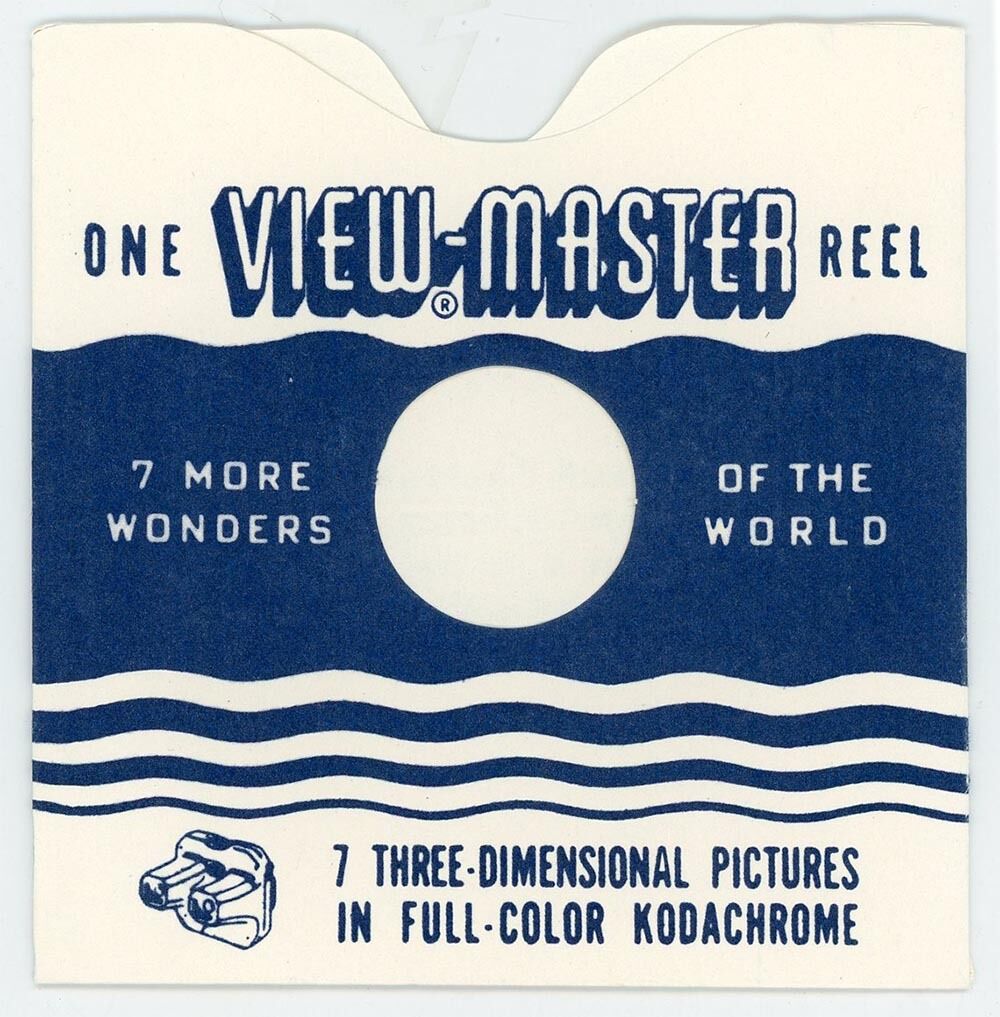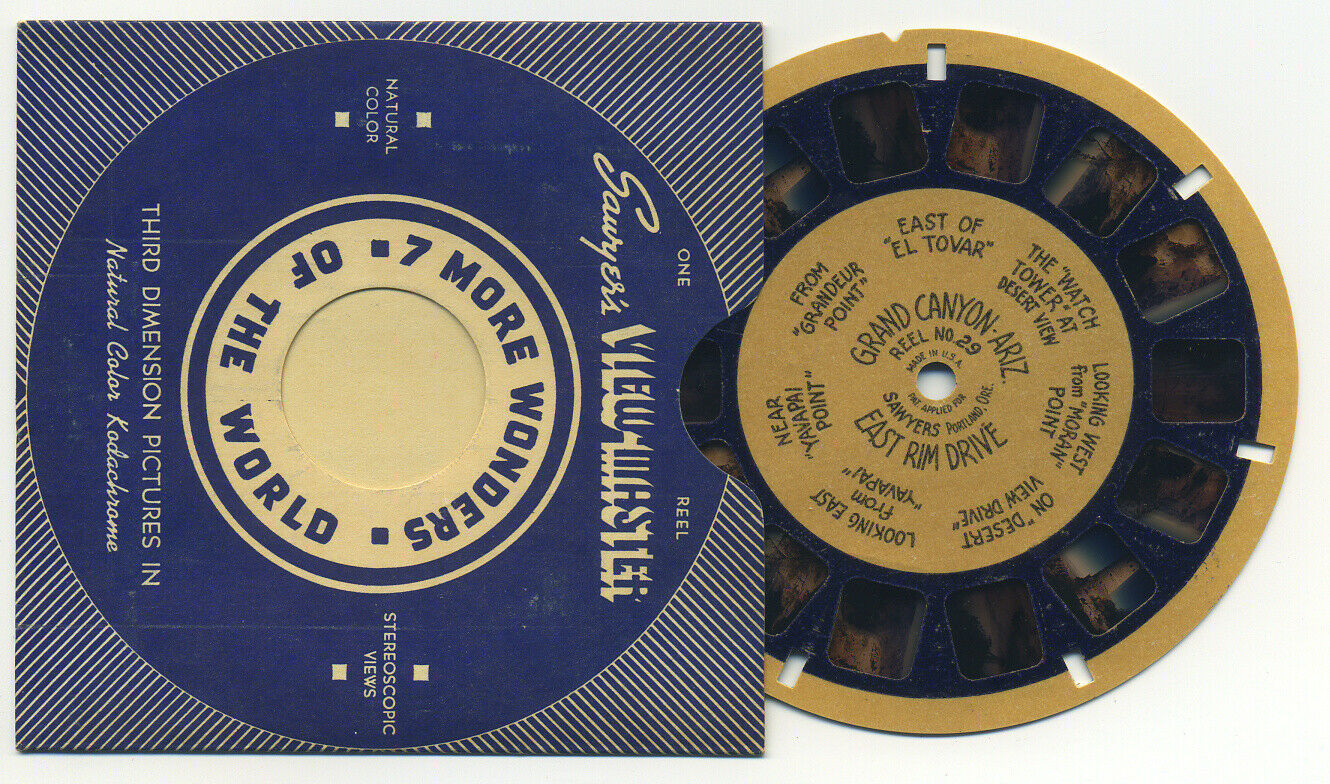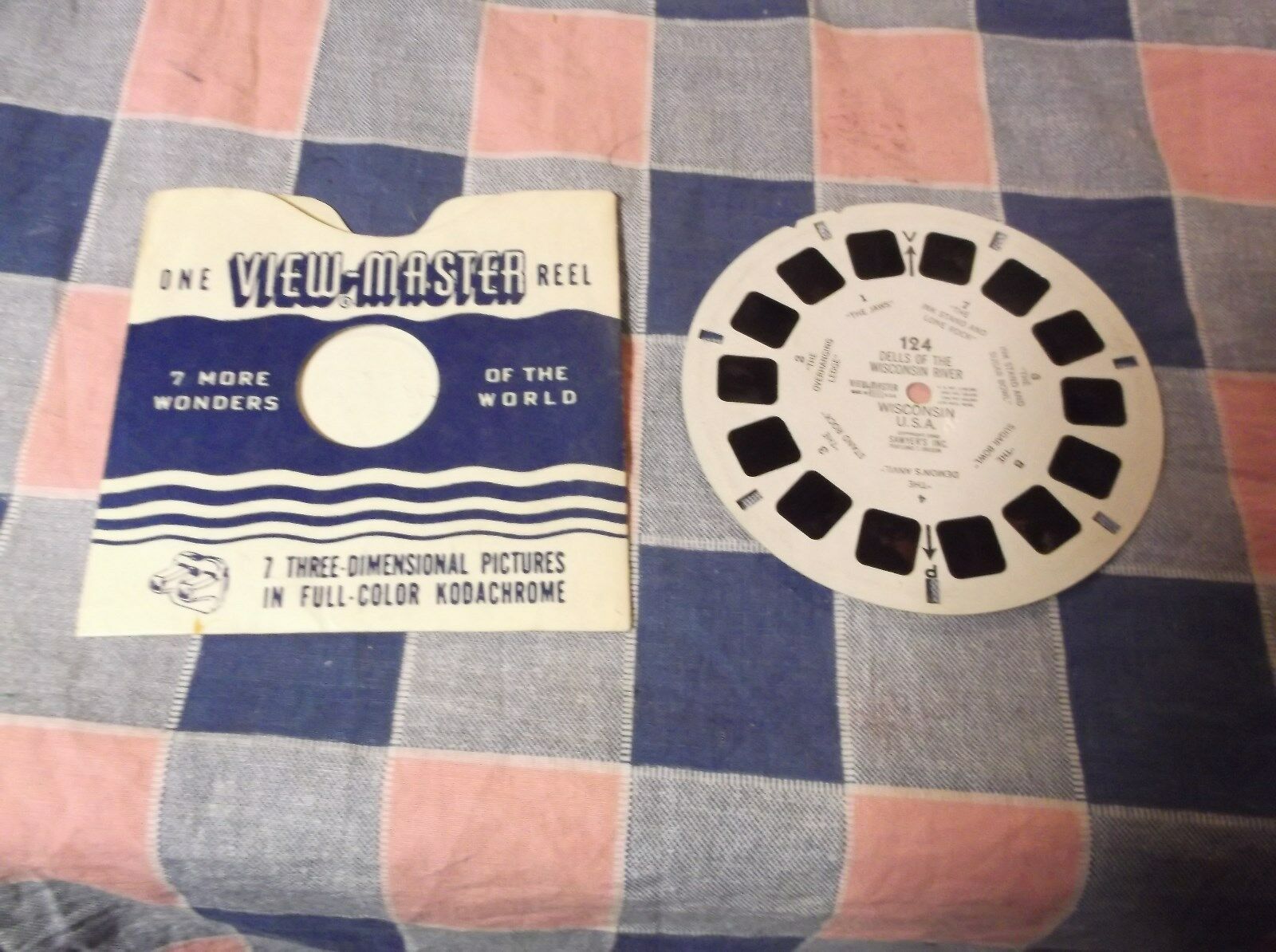-40%
Vintage 1938 Palm Springs California Tru-Vue 3D Stereoview 517 Stereo Photo Reel
$ 7.91
- Description
- Size Guide
Description
Vintage 1938 Palm Springs CA California Tru-Vue 3D Stereoview 517 Stereo Photo Reel_______________________________________________________
I have been collecting 3D media for the last 30 years and finally decided it's time to part ways with some of my favorite things.
This is an original 1938 3D Tru-Vue film strip of historic Palm Springs,
California. The film is catalog number of #517. The black and white
filmstrip reel contains 14 different 3D stereo pairs or images for viewing with a Tru-Vue viewer
stereoscope (not included). The reel is in it's original red & silver box. It's a very rare and hard to
locate film! Especially in this great condition! It is in it's original cardboard inner protective sleeve
and original 80 year old box! The film is dated at the end "3-41". If you're an enthusiast of
Tru-Vue 3D films or California History, this film strip experience is for you!
The reel is in excellent condition.
It is in it's original red and silver box! I have
personally gone through the film with white gloves on and inspected every frame and every film
cog. It is in great condition with no tears, broken cogs, scratches or broken film. The film was
copyrighted in 1938. Today these reels are very interesting historic stuff, and all in eye-popping
3D! For those interested in viewing these I would suggest pulling them slowly through the viewer
rather than using the advance. This is how the cogs get torn.
The box is in excellent condition
as can be seen in my photos. It has slight shelf wear as to be expected and as shown in my photos. It also has a light crease on the lid of the backside as sown in my photos. It is not perfect, but
not bad considering the box has been around for 80 years! I have tried my best to photograph
every aspect of the box and film. Please check them out and if you have any questions, please
email! Please see my photos for the exact items in this listing.
Thanks for looking!
About Palm Springs:
The history of Palm Springs is as varied as those who live here and come to visit. From the native
Agua Caliente Cahuilla Indians to the first pioneers to the early Hollywood stars to the mid-
century modernist architects to celebrity mayor, Sonny Bono, to today’s rediscovery, Palm Springs
remains an historical and ecological wonder.
More than 2,000 years ago, Palm Springs' first residents were the ancestors of today's Agua
Caliente Band of Cahuilla Indians. One of many Cahuilla bands, the Agua Caliente existed as
peaceful hunters and gatherers, living off the land, and adapting to the extremes of desert
summers and mountain winters. Much of tribal life centered on the lush vegetation and abundant
water in the area known as Indian Canyons, site of North America's largest natural fan palm oasis.
The Cahuilla tribe first encountered non-Indians in 1774, as Juan Bautista de Anza's expedition
traveled through the area. In 1853, a government survey party mapped Palm Springs and its
natural hot springs mineral pool - now the site of the Spa Resort Casino -and established the first
wagon route through the San Gorgonio Pass. The Cahuilla culture was decimated with the 1863
smallpox epidemic that killed thousands.
In 1877 as an incentive to complete a railroad to the Pacific, the U.S. government gave Southern
Pacific Railroad title to the odd-numbered parcels of land for ten miles on either side of the tracks
running through the Southern California desert around Palm Springs.
The even-numbered parcels of land were given to the Agua Caliente, yet federal law prohibited
them from leasing or selling the land to derive income from it. In 1884, Judge John Guthrie
McCallum of San Francisco arrived in Palm Springs with his family, seeking health for his
tubercular son. The first permanent non-Indian settler, McCallum purchased land from Southern
Pacific and built an elaborate aqueduct. His work to bring water to the Coachella Valley
foreshadowed the area's current importance as a rich agricultural region. Dr. Welwood Murray
built the first hotel, The Palm Springs Hotel, in 1886.
Palm Springs continued attracting more visitors and residents. Congress passed the Mission
Indian Relief Act in 1891, authorizing the Secretary of the Interior to make individual allotments
from reservation lands. However, it would be another 50 years before the Indians, taking their
case to the U.S. Supreme Court (Lee Arenas v. United States, 1944), would win the legal rights to
have allotments approved.
The success was short-lived due to the need for equalization of allotments and federal laws
denoting the length of leases on Indian lands. It was not until President Eisenhower signed the
Equalization Law in 1959 that tribes could realize profits from their lands and develop the 99-year
lease.
The Desert Inn puts Palm Springs on the map as a tourist destination. The Desert is a playground
for Hollywood stars like Frank Sinatra, Marlene Dietrich, Bob Hope, Loretta Young. Today's stars
like Leonardo DiCaprio, Dakota Fanning, Halley Berry and Gwen Stefani continue to seek rest and
relaxation just hours away from the Hollywood glitz. European royalty and business tycoons all
come to enjoy the endless sunshine and serenity of the desert.
During World War II, the desert became the training ground for General George S. Patton's troops
as they prepared to invade North Africa. El Mirador Hotel, second home to the stars and the site of
today's Desert Regional Medical Center, served as Torney General Hospital, treating U.S.
wounded. Italian prisoners of war, housed at the adjoining detention camp, labored at the hospital.
The airfield, built to handle military cargo and personnel planes, would become Palm Springs
Regional Airport. Once a small landing field and the first major Indian land purchase following the
1959 Equalization Law, the airport welcomed the 21st century as Palm Springs International
Airport with flights nationwide and to Canada.
The post-war era ushered in tremendous growth as Palm Springs' natural environment was no
longer a secret of just the wealthy. With tourism's growth, attractions and resorts flourished.
Development spread "down valley" With the advent of air-conditioning, visitors and residents
stayed year-round.
About Tru-Vue from the UK Viewmaster website:
TRU-VUE Inc., Rock Island, Illinois USA manufactured the viewers and over 400 different 3D film reels. The company was
founded in 1931 and after the 1933 "Century of Progress Exposition" in Chicago grew and flourished through the 1930's and
40's. The original viewers used 35mm filmstrips, generally containing 14 stereo views, which were pulled through the viewer
using a lever (visible at the bottom of the left-hand photograph below). In 1949 Tru-Vue sold over a million reels of film!. The
quality of the 3D presented is generally very good, although the films need to be handled carefully. Film-strips and viewers
were made between 1933 and 1952. Ultimately the Tru-Vue company was acquired by Sawyers View-Master in 1952, who
wanted the rights to Disney licences held by the company.
Copyright © 2018 TDM Inc. The photos and text in this listing are copyrighted. I spend lots of time writing up my descriptions and despise it when un-original losers cut and paste my descriptions in as their own. It is against ebay policy and if you are caught, you will be reported to ebay and could be sued for copyright infringement and damages.















